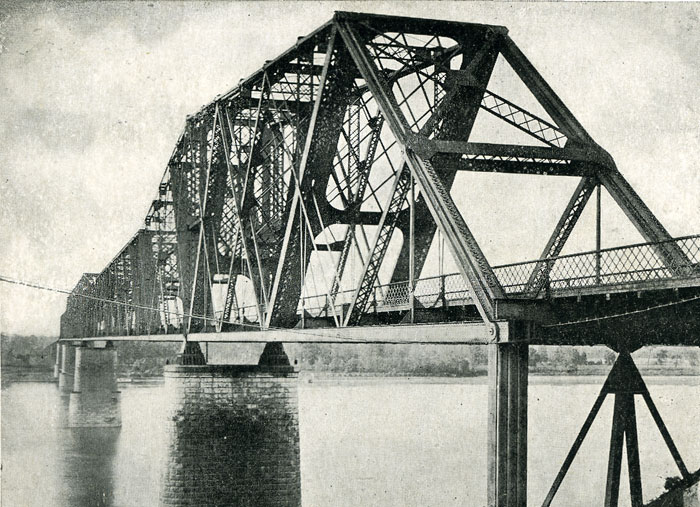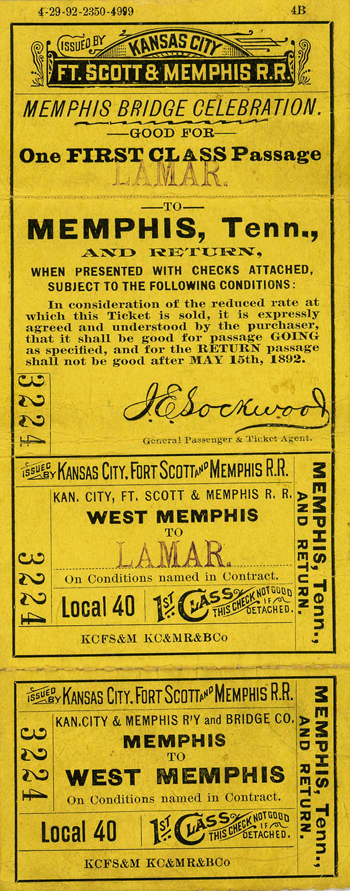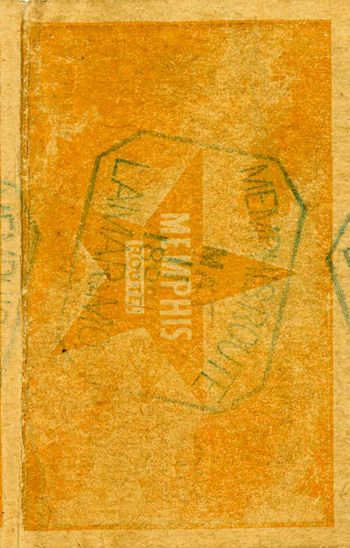Contributed by Bill Strong |
| This view of the Frisco bridge under construction also shows the St. Louis Iron Mountain and Southern railway transfer ferry S. D. Barlow from the west bank of the Mississippi River,11/12/1891. |
| The following images were taken from "Memphis Bridge", a book in the collection of the C. Harriman Hunter Transportation Center of the College of Engineering at the University of Memphis. |
 |
 |
| The map below shows the location of the bridge and the three railroads approaching from the Arkansas side of the river. Click here for the larger size of this map. |
 |
| The map below shows a closer view of the bridge area. Click here for the larger size of this map. |
 |
 |
| Note in the image below, the railroad cars on ground level on the St. Louis Iron Mountain & Southern tracks to West Memphis as seen in the maps. These tracks run under the Frisco Bridge between the stone pillars on the approach trestle. |
 |
 |
 |
 |
 |
 |
 |
 |
 |
Contributed by Bill Strong |
These drawings are from the original plans for the bridge and its support structures. |
 |
Contributed by Bill Strong |
This east elevation shows the original portal to the Frisco bridge. These buildings were probably used to count the cars of renter railways. |
  |
Contributed by Bill Strong |
| These are enlargements of the signs on the east side of the two portal buildings. |
 |
Contributed by Bill Strong |
This west elevation shows the original portal to the Frisco bridge. |
 |
Contributed by Bill Strong |
This south elevation shows the north tower of the original portal to the Frisco bridge. |
 |
Bill Pollard Collection |
This black & white postcard of the Kansas City
& Memphis (Frisco) bridge was postmarked 1907. The reverse
of card has this description: "Memphis bridge, which was opened to the public May 12, 1892, is the only one spanning the Mississippi south of St. Louis. It is built of steel, of the cantilever variety, and is 1895 feet long. The central span is the second longest of any bridge of its kind in America, measuring 790.5 feet between the centers of the supports. The bridge cost $3,000,000." |
 |  |
Contributed by Bill Pollard |
A ticket to the grand opening celebration of the
"Frisco" bridge. |
| Cantilevered through truss railroad bridge over the Mississippi River at Memphis | Completed May 12, 1892, under the direction of engineer George S. Morison |
|
|
Photo and data at the Library of Congress
Return to Memphis Historical Railroad Pages Home Page
This page was designed and is maintained by Mike Condren. If you have materials
that you would like to contribute, contact me at mcondren@cbu.edu